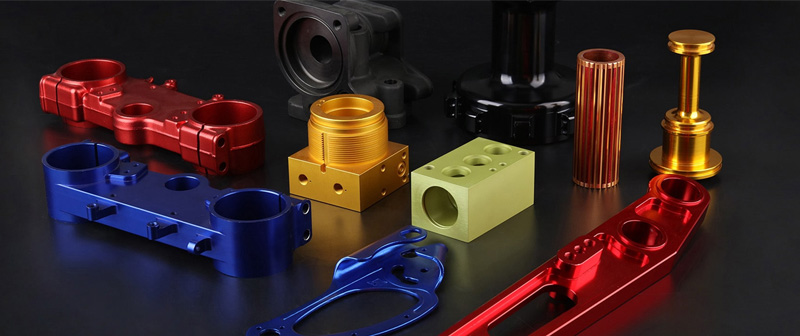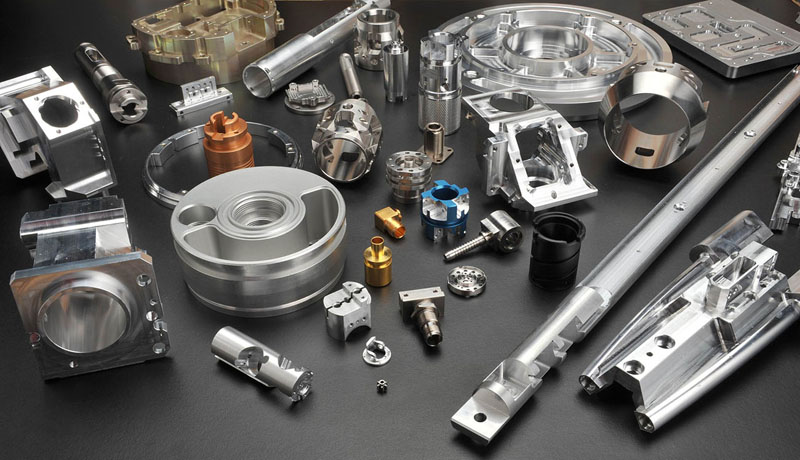During mechanical machining, due to various reasons such as workpiece material, environment, processing method, etc., mechanical wear will occur. Mechanical wear is harmful to product quality, accuracy and machining efficiency. Therefore, it is very important for everyone who performs mechanical machining to do a good job in the prevention of mechanical machining.
Type Of Wear
1) Running-in Wear
The corresponding wear of machinery under normal load, speed and lubrication conditions, this wear develops very slowly.
2) Hard Particle Wear
Abrasive particles falling from the part itself and hard particles entering from the outside cause mechanical cutting or grinding and damage the part.
3) Surface Fatigue Wear
Under the action of alternating load, small cracks and dot-shaped pits will be produced, which will damage the parts. This type of wear is related to pressure, load characteristics, machine materials, and dimensional factors.
4) Thermal Wear
During the friction process of the parts, the metal surface is worn and the internal matrix generates hot zone or high temperature, which makes the parts appear tempering, softening, scorching, wrinkling and other phenomena. Sliding friction often occurs under high speed and high pressure, and the wear is more destructive. Outstanding and accompanied by the nature of accidental wear.

5) Corrosion And Wear
Chemical corrosion can cause wear. The surface of parts is corroded by acid, alkali, salt solution or harmful gas, or the surface of parts combines with oxygen to form hard and brittle metal oxides that are easy to fall off, which will cause parts to wear.
6) Phase Change Wear
When the parts work at high temperatures for a long time, the metal structure grains on the surface of the parts become larger, and the oxidation around the grain boundaries produces small gaps, which makes the parts embrittlement, reduces the wear resistance, and accelerates the wear of the parts.
7) Hydrodynamic Wear
Surface wear of parts caused by the influence of liquid velocity or particle flow rate on the surface of the part.
The Causes Of Parts Wear And Prevention Methods
1. Normal Wear
1) Friction between parts: to ensure that the parts are clean and lubricated
2) Hard particles wear: keep parts clean and cover exposed parts
3) Fatigue and wear of parts caused by long-term alternating loads: Eliminate gaps, choose suitable grease, reduce additional vibration, and improve parts accuracy.
4) Corrosion of parts by chemical substances: remove harmful chemical substances and improve the corrosion resistance of parts
5) Changes in the surface metallographic structure or matching performance of parts under high temperature conditions: try to improve working conditions, or use high temperature resistant and wear resistant materials to make parts.
2. Abnormal Wear
1) The repair or manufacturing quality does not meet the design requirements: strict quality inspection.
2) Violation of operating procedures: Be familiar with mechanical properties and operate carefully.
3) Improper transportation, loading and unloading, and storage: master the knowledge of hoisting and operate with caution.
Reasons And Measures For Shortened Mechanical Life After Overhaul
1) Deformation Of The Foundation
Because the deformation changes the relative position of the parts, accelerates the wear of the parts, and shortens the life of the parts. Reasonable installation and adjustment can be adopted to prevent deformation.
2) Balance Of Damaged Parts
The high-speed rotating parts are unbalanced, and the damage of the parts is accelerated under the action of centrifugal force, and the life of the parts is shortened. Take strict dynamic balance test measures to prevent.
3) No Running-In
The mating surface of the replacement part is not properly run-in. As time increases, the amount of wear on the mating surface of the part will increase, and the life of the part will be shortened. The preventive measure is to run-in the attachment.
4) Low Hardness
Improper selection of repair material, insufficient surface hardness, or unqualified heat treatment. Preventive measures: select materials as required and conduct reasonable heat treatment.

Types And Functions Of Commonly Used Mechanical Parts:
Mechanical parts, also called mechanical components, are inseparable individual parts that make up machinery and machines. It is the basic unit of machinery.
The research and design of mechanical basic parts in various equipment is also a general term for parts and components. The specific content of mechanical parts as a discipline includes:
- The connection of parts (components). Such as threaded connection, wedge connection, pin connection, key connection, spline connection, interference fit connection, elastic ring connection, riveting, welding and gluing, etc.
- Belt drive, friction wheel drive, key drive, harmonic drive, gear drive, rope drive, screw drive and other mechanical drives that transmit motion and energy, as well as the corresponding shafting parts such as drive shafts, couplings, clutches, brakes, etc. (part).
- Supporting parts (components) such as bearings, housings, and bases.
- The lubrication system and seals perform lubrication.
- Springs and other parts (components).
Reasons And Solutions For Shortened Mechanical Life After Overhaul
1) Deformation Of The Foundation
Because the deformation changes the relative position of the parts, accelerates the wear of the parts, and shortens the life of the parts. Reasonable installation and adjustment can be adopted to prevent deformation.
2) Balance Of Damaged Parts
The high-speed rotating parts are unbalanced, and the damage of the parts is accelerated under the action of centrifugal force, and the life of the parts is shortened. Take strict dynamic balance test measures to prevent.
3) No Running-In
The mating surface of the replacement part is not properly run-in. As time increases, the amount of wear on the mating surface of the part will increase, and the life of the part will be shortened. The preventive measure is to run-in the attachment.
4) Low Hardness
Improper selection of repair material, insufficient surface hardness, or unqualified heat treatment. Preventive measures: select materials as required and conduct reasonable heat treatment.
Types And Functions Of Commonly Used Mechanical Parts:
Mechanical parts, also called mechanical components, are inseparable individual parts that make up machinery and machines. It is the basic unit of machinery.
The research and design of mechanical basic parts in various equipment is also a general term for parts and components. The specific content of mechanical parts as a discipline includes:
- The connection of parts (components). Such as threaded connection, wedge connection, pin connection, key connection, spline connection, interference fit connection, elastic ring connection, riveting, welding and gluing, etc.
- Belt drive, friction wheel drive, key drive, harmonic drive, gear drive, rope drive, screw drive and other mechanical drives that transmit motion and energy, as well as the corresponding shafting parts such as drive shafts, couplings, clutches, brakes, etc. (part).
- Supporting parts (components) such as bearings, housings, and bases.
- The lubrication system and seals perform lubrication.
- Springs and other parts (components).


